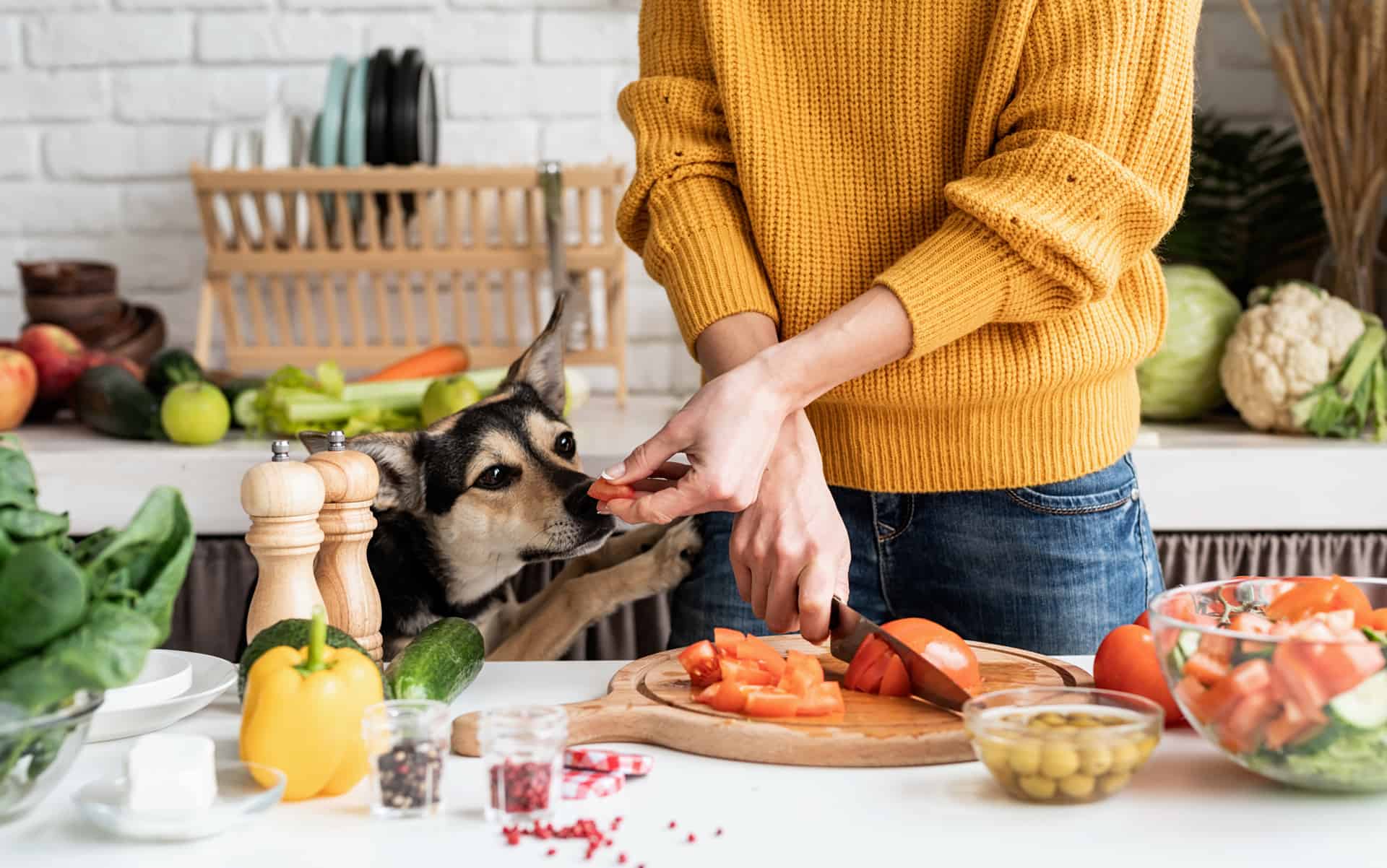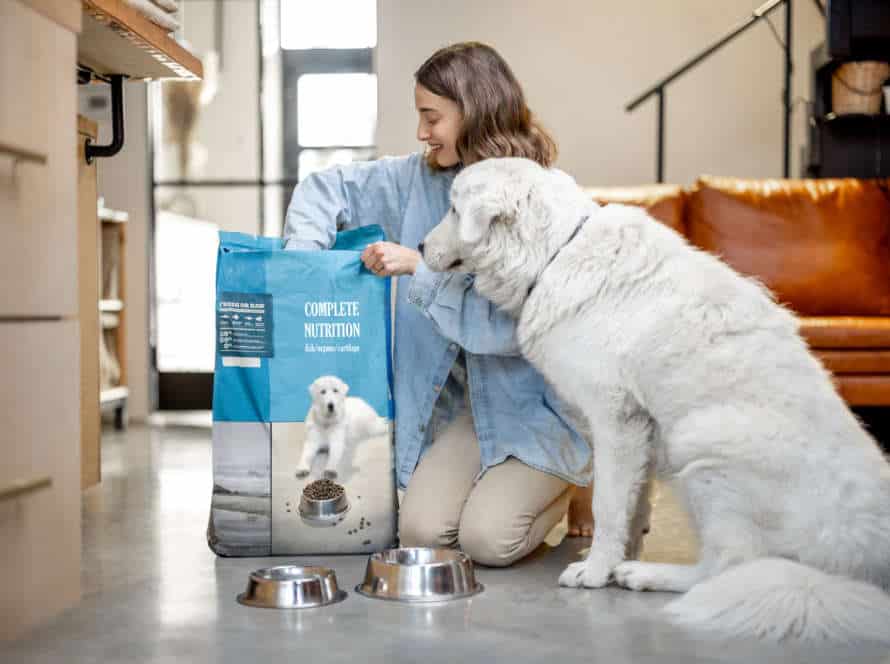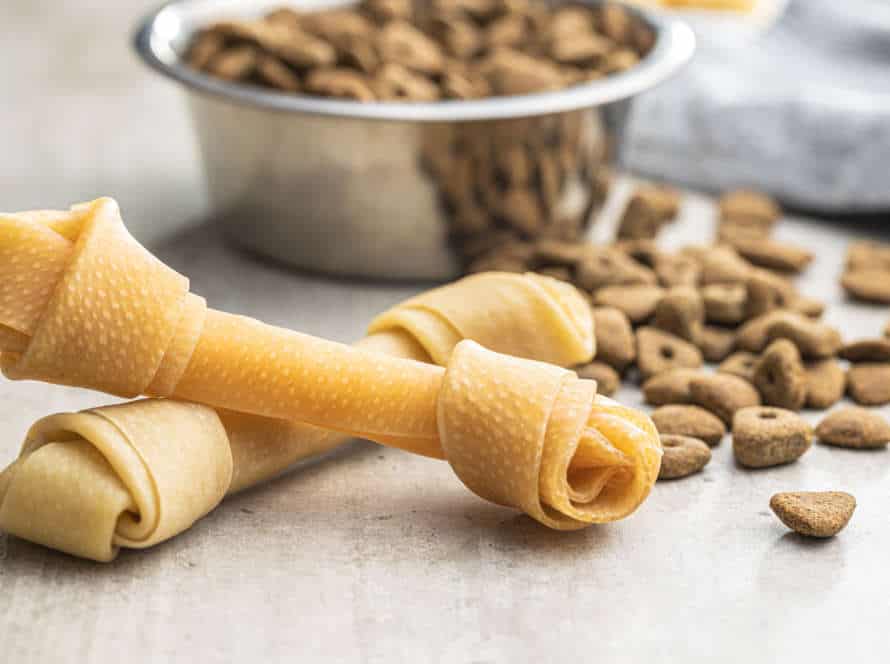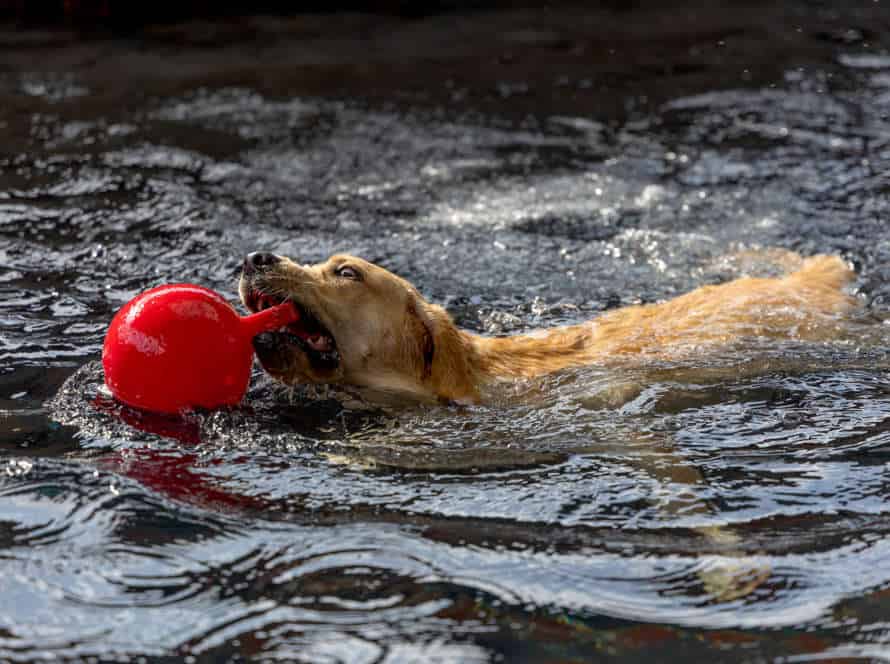A Comprehensive Guide to Homemade Dog Food
Making homemade dog food is a great way to make sure your pet eats a balanced and nutritious diet. Some guidelines:
- Work out your dog’s dietary needs based on age, weight, breed, and activity level.
- Work out the right ratio of protein, fat, and carbs. A rule of thumb: 50% protein, 25% veg, 25% grains.
- Choose high-quality ingredients, like lean meats, veg, and grains. Avoid foods that are toxic, like chocolate, onions, and caffeine.
- Cook them thoroughly for safety and digestibility.
- Maybe add supplements, like fish oil or glucosamine, for your dog’s health.
- Monitor your dog’s weight and overall health to check it’s getting enough nutrition.
Outline-
This guide offers all you need to know about making homemade dog food. Here’s a summary:
- Benefits of homemade food.
- Risks of commercial food.
- Nutrition needs of dogs.
- Ingredients for homemade food.
- Foods to avoid.
- Best cooking methods.
- Portion control tips.
- Transitioning your dog to homemade food.
- Storage and safety rules.
This guide helps you make smart choices about your pet’s diet, and provide them with the nourishment they need for a long life.
Why Homemade Dog Food?
Homemade dog food is growing in fame. This is because more pet owners wish to give their doggies healthier and more nutritious meals. Making food at home for your pup is the top perk. It’s closer to their usual diet, and less likely to have any irritants that store-bought pet food may have. There are more advantages to homemade dog food which this article will explain.
Benefits of Homemade Dog Food
Homemade dog food is a great option for your furry friend! Here are the reasons why:
- You have total control over the ingredients in your pup’s meals. You can go for lean meats, fresh veg, and whole grains – all free of dyes and fillers.
- You can also customize their diet to fit their age, weight, breed, and dietary needs.
- It can also help with digestion. No more common allergens or fillers.
- Plus, a diet full of vitamins and minerals will promote a healthy skin and coat.
- All in all, homemade food is a healthier, tastier, and safer choice than commercial food. But, before you switch, consult your vet or a pet nutritionist to make sure your pup gets the right nutrition.
Risks of Commercial Dog Food
Commercial pup grub may be advertised as being balanced, complete and healthy. However, it might come with secret dangers that could affect your pooch’s health. Some risks include:
- Low-quality components: Some commercial food can contain low-quality ingredients and fillers, like meat by-products, soy, and corn. This could lead to nutritional deficits and digestive issues.
- Preservatives and additives: Commercial dog food can contain artificial preservatives and additives. These can cause allergies, skin issues, and even cancer in dogs.
- Contamination and recalls: A few commercial dog food brands have been recalled because of contamination with bacteria like salmonella and listeria. This can cause health problems for both dogs and humans.
Homemade dog food allows you to control the safety and quality of the ingredients. With the right guidance, you can create balanced, nutritious, and yummy meals for your pup. Pro Tip: Consult with your vet or a canine nutritionist before making any changes to your dog’s diet.
Know Your Dog’s Nutritional Needs
Understanding your pup’s dietary needs is super important to make sure they get a great, balanced diet with homemade food. Here are some things to keep in mind:
- Protein: Include high-quality protein sources like meat, poultry, fish, eggs, and beans to promote muscle development and boost the immune system.
- Carbohydrates: Whole grains, fruits, and veg give energy and dietary fiber.
- Fats: Use healthy fats like poultry fat, safflower oil, and fish oil to keep skin, coat, and brain functioning well.
- Vitamins and Minerals: Fruits and veg are full of vitamins and minerals that have antioxidants to keep cells healthy, support immunity, and help prevent diseases.
It’s a good idea to talk to a vet and canine nutritionist, especially for dogs with certain health needs. Following these tips helps you make tasty meals for your pup, keeping them healthy and strong!
Planning Your Homemade Dog Food Diet
Homemade dog food is a great choice! It’s usually cheaper than store-bought stuff. You can also tailor it to your pup’s specific needs. Plus, you know what exactly is in their food.
When planning homemade meals for your pup, there are some things you should keep in mind. Here are the important details to consider:
- Nutrition: It’s essential to ensure your dog is getting a balanced diet with all the necessary nutrients.
- Cost: Homemade dog food can be a cost-effective choice, but it’s important to consider the ingredients you’re using and their prices.
- Ingredients: Choose quality ingredients and avoid anything that might be harmful to your pup.
Consult with a Vet or Nutritionist
Consulting a vet or nutritionist is vital when devising a homemade dog food diet. They can make a balanced diet with the nutrients your pup needs and health conditions.
A vet can look at your dog’s age, breed, weight, activity levels and existing health issues. This helps them create a meal plan that gives the best nutrition. A nutritionist can help you make a meal plan with the exact ingredients and amounts for your pup.
For homemade dog food, balance and nutrition is vital for your dog’s health. Don’t be shy to get expert advice to make sure your homemade meal is nutritious for your pup.
Determine Your Dog’s Caloric Needs
Ensure your pup’s nutrition by calculating their caloric needs before creating their homemade food diet. To do that:
- Calculate Resting Energy Requirements (RER). This is the calorie amount a dog needs to stay at the same weight while not active.
- Multiply RER by an activity-level multiplier to get daily caloric needs.
- Monitor weight and adjust the diet when necessary. Avoid overfeeding; it can lead to obesity and other health issues.
Homemade food diets offer lots of benefits for your pup. Consult a vet to make sure the diet meets all your pup’s nutritional needs.
Choose a Protein Source
Choosing the right protein source is key when planning a homemade dog food diet. Dogs need lots of protein to keep their muscle mass and stay healthy.
Here are some good sources:
- Meat – Chicken, turkey, beef and lamb. Don’t give processed meats like sausages or deli meats, as these have too much salt and preservatives.
- Fish – Lean protein and omega-3 fatty acids, which help keep the coat and skin healthy.
- Eggs – Highly digestible, affordable and full of fats and vitamins.
- Dairy – Milk, cheese and yogurt are fine, but check for lactose intolerance.
Always check with a vet before making changes and ensure it’s balanced with all essential nutrients.
Pro tip – Introduce one new food at a time and monitor for behavior or digestive changes before adding more.
Determine Appropriate Carbohydrates and Fats
When crafting a homemade dog food diet, it’s important to work out the right amount of carbs and fats to give your pup the nutrients and energy they need.
Here are some tips:
- Carbs: Pick complex carbs like brown rice, sweet potatoes and barley over simple ones like white rice or corn. These have fiber, vitamins and minerals plus a lower glycemic index. Also, avoid wheat, soy and corn, which are common allergens.
- Fats: Add healthy fats like omega-3 from fish or flaxseed oil and monounsaturated/polyunsaturated fats found in chicken fat or canola oil. Skip saturated and trans fats, which can cause obesity and heart disease.
Alter the amount of carbs and fats according to your dog’s age, weight, activity level and health. Speak to a vet or a nutritionist to make sure the homemade diet is balanced and meets your pup’s nutritional needs.
Homemade Dog Food Recipe Ideas
Feeding your pup homemade dog food can be a great idea! You’ll save money and make sure they get the right nutrients. Check out these simple and nutritious recipes. Your pup will be happy and healthy in no time!
Balanced Chicken and Rice Meal
A yummy chicken and rice dish is a great homemade dog food recipe! It’s full of necessary nutrients for your pup’s health. Here’s how to make it:
Ingredients:
- 1 pound boneless chicken
- 1 cup brown rice
- 1/2 cup chopped carrots
- 1/2 cup chopped green beans
- 1/2 cup chopped spinach
- 1 tablespoon olive oil
Instructions:
- Rinse the brown rice and cook it in a pot with 2 cups of water. Simmer it for 45 minutes.
- Heat up a skillet with olive oil. Add the boneless chicken and cook until brown.
- Throw in the carrots, green beans, and spinach to the skillet. Sauté until they’re soft.
- Mix the cooked brown rice and chicken and veggie mixture in a bowl.
- Let the mixture cool before giving to your dog.
Pro Tip: Check with your vet first to make sure your pup’s diet is tailored to their needs.
Turkey and Sweet Potato Recipe
This Turkey & Sweet Potato Recipe is perfect for your pup! Here’s what you’ll need:
Ingredients:
- 1 pound ground turkey
- 1 cup cooked brown rice
- 1 cup cooked sweet potato
- 1/2 cup peas
- 1/2 cup carrots
- 1 tablespoon olive oil
Directions:
- Heat olive oil in a large pan.
- Add ground turkey, cook ’til browned.
- Mix in cooked brown rice, sweet potato, peas, and carrots.
- Cook for 5-10 mins until veg are tender and flavors mixed.
- Let cool before serving.
This recipe is a great way to make sure your dog gets all the nutrients they need without any nasties. However, check with a vet first to make sure it’s right for your dog’s specific needs.
Beef and Lentil Stew
Beef and Lentil Stew is an easy-to-make and nutritious homemade dog food recipe. For it, you’ll need: 1 pound ground beef, 1 cup lentils, 1 sweet potato, 1 carrot, 1 celery stalk and 4 cups water.
Follow these steps to make the stew:
- Brown the beef in a large pot.
- Then, add the lentils, sweet potato, carrot, celery, and water.
- Boil the mixture.
- Reduce the heat and simmer for 30 minutes.
- Cool before serving.
You can store leftovers for up to 3 days. Pro tip: Talk to your vet before changing your dog’s diet. Homemade food is a great way to get all their needed nutrients.
Homemade Dog Food Preparation and Safety
Making homemade dog food is awesome! It lets you customize meals for your pup’s tastes and needs, plus you get to keep an eye on what they eat. But safety is a must when it comes to homemade dog food. This guide will give you loads of info on how to make and keep it safe.
Proper Cooking and Handling Techniques
Cooking and handling correctly is essential when making homemade dog food. It’ll keep your pup safe and healthy. Here’s how:
- Use top-notch ingredients; lean meats and fresh veggies give the necessary nutrients, without added fat or preservatives.
- Cook completely; meats and veggies must be cooked all the way through, to avoid bacterial contamination.
- Avoid dangerous foods; chocolate, grapes, onions can be toxic and lead to severe health issues.
- Store it right; homemade dog food should be put in airtight containers in the fridge or freezer.
- Portion control; too much or too little can cause health issues, so make sure to follow portion control based on the age, weight, and activity level of your pup.
With the right cooking and handling, homemade dog food can be a great nutrition source for your furry friend.
Storage and Serving Methods
After cooking a homemade meal for your pup, it’s important to follow the right storage and serving techniques for their safety and health.
- Store the food in an airtight container in the fridge for 3-4 days. Divide it into portions to freeze for 2-3 months. Thaw in the fridge before serving.
- Give them the right portion size based on age, size, and activity. Feed at consistent times in a calm environment.
- Provide clean drinking water always.
Following these methods will make sure your furry friend is safe and healthy while they enjoy their homemade food.
Toxic Foods to Avoid in Your Dog’s Diet
As a pet parent, it’s important to be aware of which human foods are toxic to your furry friend. Some of the most common are:
- Chocolate – contains theobromine, which can cause vomiting, diarrhea and seizures.
- Grapes and raisins – can damage a dog’s kidneys leading to lethargy, vomiting and decreased appetite.
- Onions and Garlic – contain compounds that can harm red blood cells and cause anemia and weakness.
- Avocado – has persin, resulting in vomiting and diarrhea.
- Xylitol – a sugar substitute found in sugar-free products. It triggers insulin release, causing hypoglycemia or low blood sugar.
As a precaution, don’t give your dog any human food, especially leftovers. Always consult your vet before changing your pup’s diet.
Transitioning Your Dog to a Homemade Diet
Want to feed your pup the best? Make food at home! It’s a great way to give your dog all the right nutrients. Plus, it helps dodge any allergens or fillers you find in store-bought dog food.
Transitioning to a homemade diet doesn’t have to be tough. Here’s a guide to help you transition Fido to homemade meals. All the steps are inside!
Gradual Transition Plan
Transitioning Fido to homemade grub? Here’s a guide to make it as easy as can be!
- Start by adding small amounts of homemade food to their regular diet.
- Increase the homemade and reduce store-bought over 7-10 days.
- Observe their reaction and make changes if needed.
- Check with the vet to make sure nutritional needs are met.
- Protein, carbs, fats, vitamins, minerals – the right ratio is key!
- Introduce new ingredients one at a time and note their reaction.
- Keep track of their weight, stool, and overall well-being throughout.
- Pro Tip: Homemade food can be delicious and nutritious, but transition gradually to avoid digestive troubles.
Monitor Your Dog’s Health and Weight
Ensuring your pup’s health and weight is vital when changing to homemade meals. Here’s how to watch over your doggo’s health and weight while you switch their diet:
- Weigh them weekly or bi-weekly on a scale that reads in grams. Make sure there isn’t too much or too little weight gain/loss, and adjust their food amount as needed.
- Observe how they act after the diet switch. Is there more energy, or are they listless and throwing up? Jot down any changes in behavior.
- Check their poop. It should be firm and formed. Watery or multiple stools may point to a dietary issue.
- Keep an eye on their skin/coat. A good homemade diet should improve the skin/coat. If itchy, red or dull, it might show nutrient deficiency.
Tracking your pooch’s health and weight will help you see if the homemade diet works for them.
Pro-tip: Ask your vet before any radical diet changes. They can tell you accurate portion size and guarantee your pup gets all the required nutrients.
Adjusting the Homemade Diet as Needed
For any diet, you may need to adjust homemade dog food for their individual needs and wants. Here’s how to do it right:
- Ask your vet first: Before making any changes, check with your vet to see if there are any health matters that need to be taken into account.
- Monitor your pup’s weight: If they’re gaining or losing weight, change the portion size or amount of meals they have.
- Keep track of ingredients: If your doggo has any stomach issues or allergies, switch or remove ingredients in their diet.
- Look into supplements: Ask your vet if your pup needs any extra supplements like omega-3 or joint support.
- Change slowly: Gradually introduce changes to their diet to avoid any tummy trouble.
By following these methods, you can make sure your doggo’s homemade diet is perfect for them and their health!
Frequently Asked Questions
Q: Is homemade dog food nutritionally balanced?
A: Yes, homemade dog food can be nutritionally balanced if you follow a recipe that includes a balanced ratio of protein, carbohydrates, and fat. It’s important to consult with a veterinarian or canine nutritionist before making any changes to your dog’s diet.
Q: Can I use any ingredients to make homemade dog food?
A: No, not all human foods are safe for dogs to consume. It’s important to research which foods are safe and which ones are toxic to dogs. Some commonly toxic foods include chocolate, onions, garlic, avocado, and grapes.
Q: How much homemade dog food should I feed my dog?
A: The amount of homemade dog food you should feed your dog depends on their age, weight, and activity level. Your veterinarian or canine nutritionist can help you determine the appropriate amount of food to feed your dog.
Q: Can I make homemade dog food in batches and freeze it for later use?
A: Yes, you can make homemade dog food in batches and freeze it for later use. It’s important to store the food in an airtight container to prevent freezer burn and bacterial growth. Thaw the food in the refrigerator before serving it to your dog.
Q: Do I need to add supplements to homemade dog food?
A: It depends on the recipe and your dog’s individual needs. Some homemade dog food recipes include supplements like calcium, omega-3 fatty acids, and vitamins. It’s important to consult with a veterinarian or canine nutritionist to ensure that your dog is getting all the necessary nutrients in their diet.
Q: Can homemade dog food help with certain health conditions?
A: Yes, homemade dog food can be beneficial for dogs with certain health conditions. For example, a low-fat, high-fiber diet may be recommended for dogs with gastrointestinal issues, while a diet high in omega-3 fatty acids may be helpful for dogs with arthritis. It’s important to consult with a veterinarian or canine nutritionist before making any changes to your dog’s diet.







